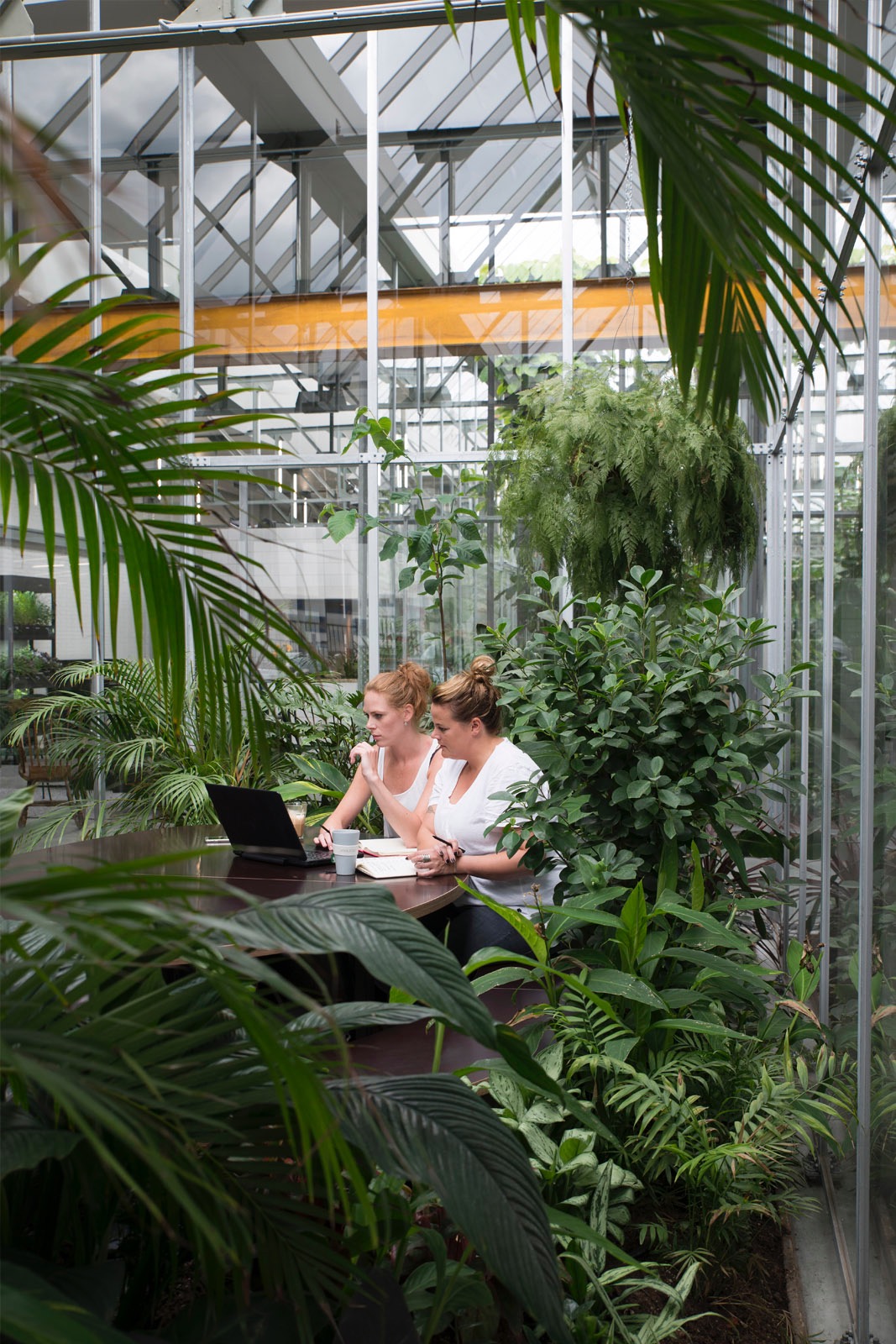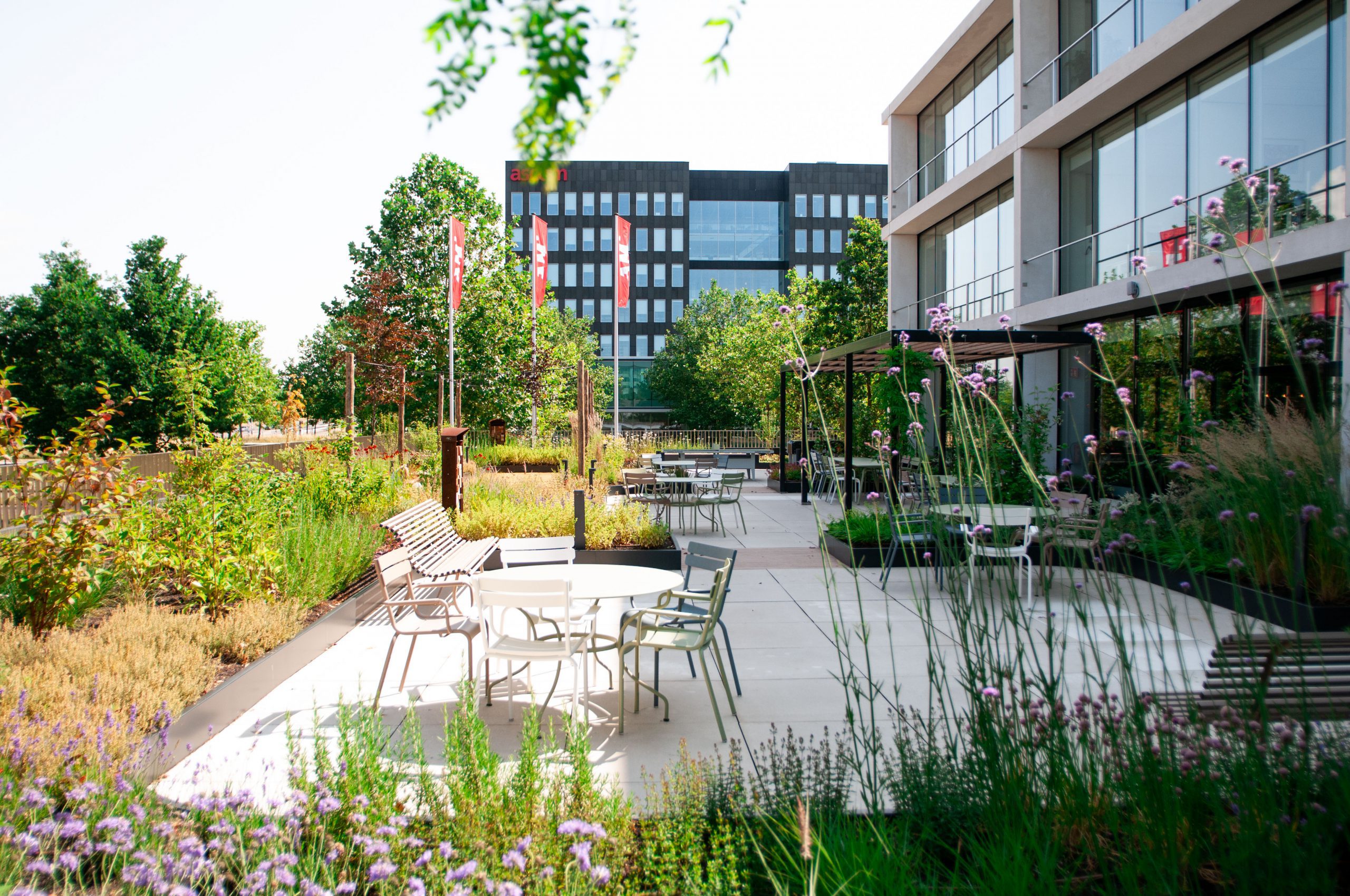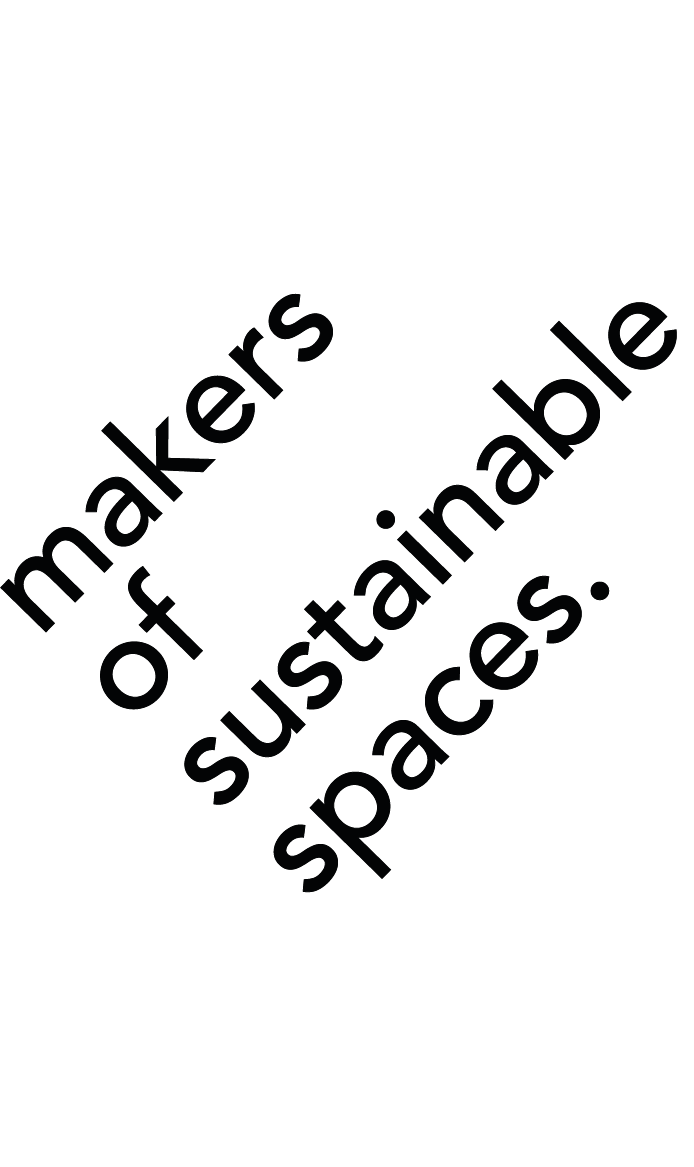01 Sep MOSS Lab 3.0: The Positive Impact of Green on Office Attendance
by Mawee Pornpunyalert
In the office world, the concept of remote work became a new standard, shaping the way we work today. This prompts growing concerns for companies around the globe regarding the way they work.
The importance of social interaction and collaboration within an office setting cannot be overstated. In a world where digital interactions have become the norm, the physical office stands as a bastion of face-to-face connection. It fosters spontaneous interactions and the collaborative energy of a shared space.
Moreover, the office environment can increase motivation and focus. The separation of work and home becomes more defined, allowing individuals to fully engage in their professional roles without the distractions that often accompany remote work which can lead to improved time management and heightened productivity (Reed & Turner, 2019).
In today’s blog post, we shed light on the impact of greenery within office spaces. As office standards continue to undergo a transformation catalyzed by the pandemic, MOSS teamed up with Bright by COD, an Amsterdam-based real estate developer, and six students from Wageningen University to explore the question: Can the presence of plants in offices play a pivotal role in drawing employees back to the office?


What Are the Benefits of Plant-Filled Offices?
Together with researchers from Wageningen University, we conducted an extensive literature review, summarizing over 40 studies that demonstrate the capacity of plants to have positive effects on the workplace aesthetic appeal, comfort and wellbeing, productivity, privacy, and collaboration. In the following paragraphs, we summarize the key points explored by the students. The comprehensive list of literature can be found at the end of the page.
1. lAesthetic Appeal
The first topic the researchers studied was how the aesthetic quality of an office significantly influences occupants’ moods. More specifically, a recent study conducted by de Vries et al. in 2023, within a real workspace, showed a remarkable 20% increase in employee attraction to the visual appearance of the workspace following the introduction of plants. The quantity of plants introduced was substantial, with one small to medium-sized plant every 5m3
These results find support in a study by Maslow & Mintz dating back to 1972. Their research suggested that the aesthetic quality of a room, influenced by the presence of plants, could significantly impact people’s moods. Those in aesthetically pleasing environments reported higher energy levels and a heightened sense of well-being.
2. Comfort and Well-being
The researchers discovered that plants have the capacity to elevate air quality and significantly contribute to the overall well-being of individuals working in office spaces. In the previously mentioned study conducted by de Vries and colleagues, the introduction of plants, one small to medium-sized plant every 5m3, led to significant transformation. The percentage of employees who reported discomfort due to dry air plummeted from 45% to 23%, 4 months after the introduction of plants to the workspace. Simultaneously, the proportion of employees experiencing health-related issues during work decreased from 35% to 21% during the same period of time.
Similarly, in a quasi-experiment by Fjeld et al. in 1998, they delved into self-reported health symptoms. Remarkably, the incorporation of plants into the work environment resulted in a 21% reduction in health-related complaints. It is worth noting that Fjeld and their team introduced a substantial number of plants, a total of 18 into individual offices.
3. Productivity
We found a correlation between greenery and employee productivity levels. Shibata and Suzuki (2002) found that even a single plant had a significant positive effect on the performance of a creative task. They also investigated the visibility of the plants by placing them either in front or to the side of the participants, which resulted in the plant in front of the participant’s position showing the greatest effect.
Similarly, Lohr et al. (1996) found that exposure to plants in a university computer lab resulted in a 12% faster reaction time and lower stress reactivity, indicating improved cognitive performance and productivity.
4. Privacy
According to a number of studies, plants can enhance privacy both psychologically and physically. They create an ‘intimate’ environment, making offices more inviting and informal, reducing the demand for privacy. Goodrich’s research in 1982 found that plants boosted the perception of tranquility during employee interviews.
Strategically integrating plants into desk stations can serve as green shields, both visually and acoustically. As unveiled in MOSS Lab 2.0, scattering potted plants within a room has the ability to improve acoustic quality by up to 25%.
5. Collaboration
Lastly, the researchers looked into how the introduction of plants to a space can foster a more vibrant and sociable atmosphere, potentially elevating the overall work environment. Talbott et al.’s 1976 study found that the presence of yellow chrysanthemums on dining room tables led to a significant increase in vocalization, emphasizing the social benefits of plants.
Collectively, these findings suggest that incorporating indoor plants into the office environment can enhance its aesthetic appeal, overall comfort, productivity, collaborative atmosphere, and privacy. These factors, in turn, become compelling incentives for employees to return to the office.
What are the challenges?
Implementing plant-filled offices may raise valid concerns, such as maintenance and cost. Nonetheless, with proper plant selection, placement, condition, and care, it ensures the long-term viability and benefits plants have to offer. These topics are MOSS’s expertise and passion.
It is important to understand that while the initial cost and effort of introducing greenery to the office may seem daunting, the long-term benefits far outweigh these challenges. The investment in creating a more appealing, healthier workspace can lead to improved employee morale and retention (Parker & Hall, 2022).
Is it worth it?
We showcase real-world examples of companies that MOSS has collaborated with to successfully incorporate plants into their office design.
One such example is Cocon Vastgoed, a developer who commissioned MOSS to execute the Wearhouse project, highlighting the positive impact of the addition of greenery on the speed, length, and price of the office space rental.
“The addition of a biophilic layer both indoors and outdoors has become a sought-after feature, leading to significant improvement in rental rates and speed….. At the Wearhouse, we noticed that tenants are extremely happy with the green environment. The biophilic layer ensures long-term tenancy. In general, if a tenant is happy then finding a new location is not on the cards, and this satisfaction is predominantly a result of the green layer that elevates the development.”


Furthermore, Dutch developer, AM emphasizes the positive impact of MOSS’s nature-inclusive work on employees’ well-being and retention.
“There is a war on talent which means that everyone is fighting for good employees. We want to be able to offer a nice office where people will stay. For that reason, green is valuable for retention. Green has above all been proven to add benefits to mental and physical wellbeing… Our terrace used to only be used for lunch purposes, but now with additional functions, the space is being used much more for work, sports, and meetings”


These success stories underscore the powerful influence of greenery and highlight the tangible impact of plant-filled offices on employee satisfaction and retention. Find out more about ‘The positive return on investment of greenery in buildings’ through our previous blog post!
This exploration into plant-filled offices reveals their potential to attract employees and enhance the office environment. As we wrap up our discussion, we issue a call to action to encourage readers to consider integrating plants into their office spaces. By doing so, you can create a healthier, more attractive, and more productive workspace.
References
Aksoy, C. G., Barrero, J. M., Bloom, N., Davis, S. J., Dolls, M., Zarate, P., & National Bureau of Economic Research. (2023). Time savings when working from home (Ser. Nber working paper series, no. w30866). National Bureau of Economic Research.
Bailey, D. E., & Kurland, N. B. (2002). A review of telework research: Findings, new directions, and lessons for the study of modern work. Journal of Organizational Behavior, 23(4), 383–400. https://doi.org/10 .1002/job.144
Barrero, J. M., Bloom, N., Davis, S. J., & National Bureau of Economic Research. (2021). Why working from home will stick (Ser. Nber working paper series, no. w28731). National Bureau of Economic Research. https://doi.org/10.3386/w28731
Bento, A., Cropper, M., Ahmed M. and Vinha K. (2005). “The Impact of Urban Spatial Structure on Travel Demand in the United States” Review of Economics and Statistics, Vol. 87, No. 3pp
Beukeboom, C, J., Langeveld, D., Tanja-Dijkstra, K. (2012). Stress reducing effects of real and artificial nature in a hospital waiting room. The journal of Alternative and Complementary Medicine. 18(4).
Bhattacherjee, A. (2012). Social Science Research: Principles, methods, and practices. Createspace.
Bloom, N., & National Bureau of Economic Research. (2013). Does working from home work? evidence from a chinese experiment (Ser. Nber working paper series, no. 18871). National Bureau of Economic Research.
Bloom, N., Han, R., Liang, J., & National Bureau of Economic Research. (2022). How hybrid working from home works out (Ser. Nber working paper series, no. w30292). National Bureau of Economic Research.
Bloom, N., Liang, J, Roberts, J., and Ying, Z.J. (2015). Does working from home work? Evidence from a Chinese experiment, Quarterly Journal of Economics, 130, no. 1, 165- 218.
Boland, B., De Smet, A., Palter, R., & Sanghvi, A. (2020). Reimagining the office and work life after COVID-19.
Bringslimark, T., Hartig, T., Grindal Patil, G. (2007). Psychological benefits of indoor plants in workplaces: putting experimental results into context. American society for horticultural science, 42(3), 581-587.
Butler, D., Steuerwald, B. (1991). Effects of view and room size on window size preferences made in models. Environment and Behavior, 23, 334-458.
Choudhury, P., Foroughi, C., and Larson, B.Z. (2021). Work-from-anywhere: The productivity effects of geographic flexibility. Strategic Management Journal, 42(4), 655-683.
Cicala, Steve, 2020. “Powering work from home,” NBER Working Paper No. 27937. Cumming, G. (2014). The new statistics: why and how. Psychol Sci, 25(1), 7-29.
https://doi.org/10.1177/0956797613504966
De Fraja, G., Matheson, J., and Rockey, J. (2021). Zoomshock: The geography and local labour market consequences of working from home. Covid Economics 64, 1–41.
DeFilippis, E., Impink, S.M, Singell, M., Polzer, J., and Sadun, R. (2020). Collaborating during coronavirus: The impact of COVID-19 on the nature of work. NBER Working Paper No. 27612.
de Vries S, Hermans T and Langers F (2023) Effects of indoor plants on office workers: a field study in multiple Dutch organizations. Front. Psychol. 14:1196106. doi: 10.3389/fpsyg.2023.1196106
Emanuel, N. and Harrington E. (2021). Working’ remotely? Selection, treatment and the market provision of remote work. Working paper, 9 April.
Fjeld, T., Veiersted, B., Sandvik, L., Riise, G., Levy, F. (1998). The effect of indoor foliage plants on health and discomfort symptoms among office workers. Indoor Built Environ, 7, 204- 209.
Goodrich, R. (1982) The Perceived Office: The Office Environment as Experienced by its Users. In: Wineman, J. (1986) Behavioral Issues in Office Design. Van Nostrand Reinhold. New York. pp.109-133.
Handley, M. A., Lyles, C. R., McCulloch, C., & Cattamanchi, A. (2018). Selecting and Improving Quasi-Experimental Designs in Effectiveness and Implementation Research. Annu Rev Public Health, 39, 5-25. https://doi.org/10.1146/annurev-publhealth-040617-014128
Hartig, T., Kylin, C., & Johansson, G. (2007). The telework tradeoff: Stress mitigation vs. constrained restoration. Applied Psychology, 56(2), 231– 253. https://doi.org/10.1111/j.1464- 0597.2006.00252.x
Hermans, T., de Vries, S., Jeurissen, L., Kraan, J., Oppedijk, B., & van Duijn, B. (2019). Planten voor een prima binnenklimaat: Industriële spoor (No. 2952). Wageningen Environmental Research.
Kim, Y., & Steiner, P. (2016). Quasi-Experimental Designs for Causal Inference. Educ Psychol, 51(3-4), 395-405.
Lakens, D. (2022). Sample Size Justification. Collabra: Psychology, 8(1).
https://doi.org/10.1525/collabra.33267
Larsen, L., Adams, J., Deal, B., Suk Kweon, B., Tyler, E., (1998). Plants in the workplace: the effects of plant density on productivity, attitudes, and perceptions. Sage Journals. 30(3).
Lim, V. K., & Teo, T. S. (2000). To work or not to work at home-An empirical investigation of factors affecting attitudes towards teleworking. Journal of Managerial Psychology, 15(6), 560-586.
Locasso, R, M., (1976). The influence of a beautiful vs. ugly interior environment on selected behavioral measures. Psychology experimental, 77-9696.
Lohr, V, I., Pearson-Mims, C, H., (2000). Physical discomfort may be reduced in the presence of interior plants. HortTechnology. 10(1), 53-58.
Maslow, A, H., Mintz, N, L., (1972). Effects of aesthetic surroundings: 2. Prolonged and repeated experience in a ‘beautiful’ and an ‘ugly’ room. People and buildings, 220-228.
Mateyka, Petr J., Rapino, M., and Landivar, L.C. (2012). Home-Based Workers in the United States: 2010. United States Census Bureau, Current Population Reports.
Möhring, K., Naumann, E., Reifenscheid, M., Wenz A., Rettig, T., Krieger, U., Friedel, S., Finkel, M., Cornesse, C. and Blom, A.G. (2021). The COVID-19 pandemic and subjective well- being: longitudinal evidence on satisfaction with work and family. European Societies, 23.
Ng, C. F. (2010). Teleworker’s home office: An extension of corporate office? Facilities, 28(3), 137–155. https://doi.org/10.1108/02632771011023113
Oettinger, G. (2012). The Incidence and Wage Consequences of Home-Based Work in the United States, 1980-2000. Journal of Human Resources forthcoming
Oiri, M., Ohkura, M., Kosugo, R., (1993). Improving amenity in confined underground workplaces. Psychological effect of embellished surroundings and artificial windows. Journal of science Labour. 69, 133-144.
Ozimek, A (2020). The future of remote work. SSRN Working Paper.
Roelofsen, P. (2002) The impact of office environments on employee performance: the design of the workplace as a strategy for productivity enhancement. Journal of Facilities Management, Vol. 1, 3, pp. 247-264.
Shao, Y., Fang, Y., Wang, M., Chang, C. H. D., and Wang, L. (2021). Making daily decisions to work from home or to work in the office: The impacts of daily work-and COVID-related stressors on next-day work location. Journal of Applied Psychology, 106(6), 825.
Shoemaker, C., Relf, P, d., Randall, K., and Geller, E, S., (1992). Relationships between plants, behavior, and attitudes in an office environment. HortTechnology, 2(2)
Smith, A J., Tucker, M., and Pitt, M., (2011). Healthy productive workplaces: towards a case for interior plant scaping. Facilities. ISSN 0263-2772.
Smith, A., and Pitt, M. (2008). Preference for plants in an office environment. Healthy and Creative Facilities, Proceedings of the CIB W70 Conference in Facilities Management, Edinburgh, UK, 16th – 18th June 2008, pp. 629 – 637.
Smith, A., Tucker, M., & Pitt, M. (2011). Healthy, productive workplaces: towards a case for interior plant scaping.Facilities.
Tucker, M., and Smith, A. (2008). User perceptions in workplace productivity and strategic FM delivery. Facilities, 20, 5/6, pp. 196-212.
Wessels, C., Schippers, M. C., Stegmann, S., Bakker, A. B., van Baalen, P. J., and Proper, K. I. (2019). Fostering flexibility in the new world of work: A model of time-spatial job crafting. Frontiers in Psychology, 10, 505. https://doi.org/10.3389/fpsyg.2019.00505
Yeo, L, Bk., (2020). Psychological and Physiological benefits of plants in the indoor environment: A Mini and in-depth review. International Journal of Built Environment and Sustainability, 8(1), 57-67.


